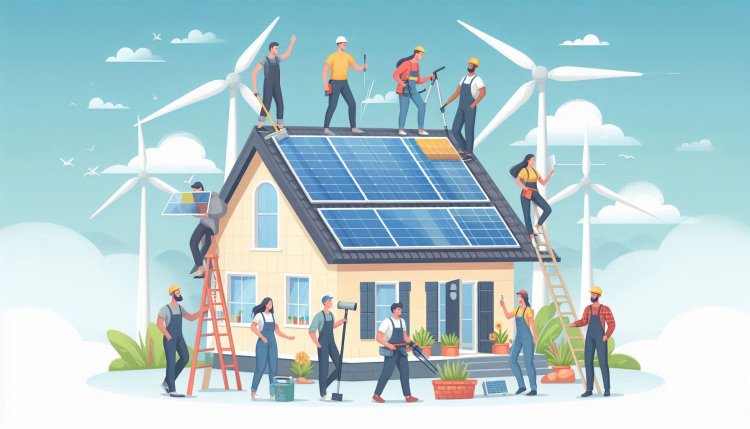Concentrated Solar Power (CSP) Technologies
Discover the innovative world of Concentrated Solar Power (CSP) technologies, harnessing sunlight to generate clean and renewable energy efficiently.

Concentrated Solar Power (CSP) Technologies
Concentrated Solar Power (CSP) technologies use mirrors to concentrate sunlight onto receivers that collect solar energy and convert it into heat. This heat can then be used to generate electricity using steam turbines or other heat engines. CSP systems can provide reliable and dispatchable power generation, making them a key technology for renewable energy integration into the grid.
Types of CSP Technologies
There are several types of CSP technologies, each with its own unique characteristics and applications:
1. Parabolic Trough Systems
Parabolic trough systems use long, curved mirrors to focus sunlight onto a receiver tube located at the focal point of the trough. The receiver tube contains a heat transfer fluid, such as oil, which is heated by the concentrated sunlight. The hot fluid is then used to generate steam, which drives a turbine to produce electricity.
2. Power Tower Systems
Power tower systems use a field of mirrors, known as heliostats, to concentrate sunlight onto a central receiver tower. The receiver at the top of the tower absorbs the concentrated sunlight and heats a heat transfer fluid, such as molten salt. The hot fluid is then used to generate steam and produce electricity through a turbine.
3. Dish Stirling Systems
Dish Stirling systems consist of a parabolic dish that concentrates sunlight onto a receiver located at the focal point of the dish. The receiver contains a Stirling engine, which uses the heat from the concentrated sunlight to drive a piston and generate electricity. Dish Stirling systems are highly efficient and suitable for small-scale applications.
Advantages of CSP Technologies
CSP technologies offer several advantages over other renewable energy technologies:
- Reliable and Dispatchable: CSP systems can store thermal energy and provide electricity on demand, making them a reliable source of power.
- Scalable: CSP plants can be built in various sizes, from small-scale distributed systems to large utility-scale power plants.
- Low Operating Costs: Once built, CSP plants have relatively low operating costs compared to fossil fuel power plants.
- Reduced Carbon Emissions: CSP technologies produce electricity without emitting greenhouse gases, helping to reduce carbon emissions and combat climate change.
- Job Creation: The construction and operation of CSP plants create jobs and economic opportunities in local communities.
Challenges and Future Developments
Despite the many advantages of CSP technologies, there are also challenges that need to be addressed to further improve their performance and cost-effectiveness:
- High Initial Costs: The upfront costs of building CSP plants can be high, although costs have been decreasing in recent years.
- Water Usage: Some CSP technologies require water for cooling purposes, which can be a challenge in arid regions with limited water resources.
- Grid Integration: Integrating CSP plants into existing electricity grids can be complex, requiring upgrades to transmission and distribution systems.
- Storage and Hybridization: Improving thermal energy storage systems and integrating CSP with other renewable energy sources can enhance the reliability and flexibility of CSP plants.
Future developments in CSP technologies are focusing on increasing efficiency, reducing costs, and expanding the use of thermal energy storage. Innovations such as advanced materials, improved receiver designs, and hybrid CSP systems are being explored to make CSP more competitive with other forms of energy generation.
Conclusion
Concentrated Solar Power (CSP) technologies offer a promising and sustainable solution for generating electricity from solar energy. With their ability to provide reliable and dispatchable power, CSP systems play a crucial role in the transition to a low-carbon energy future. As technology continues to evolve and costs decrease, CSP is expected to become an increasingly important part of the renewable energy mix worldwide.
What's Your Reaction?

















